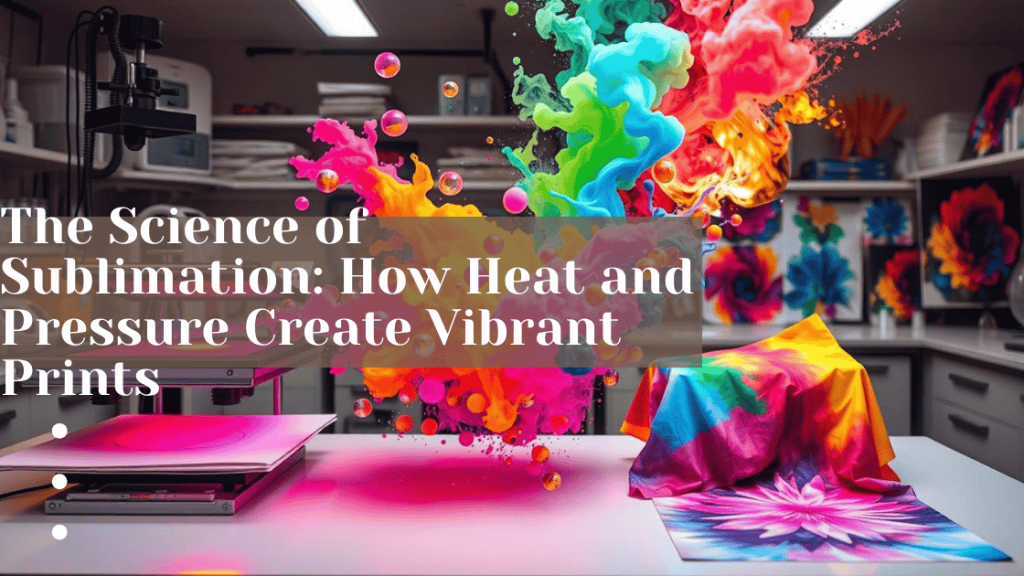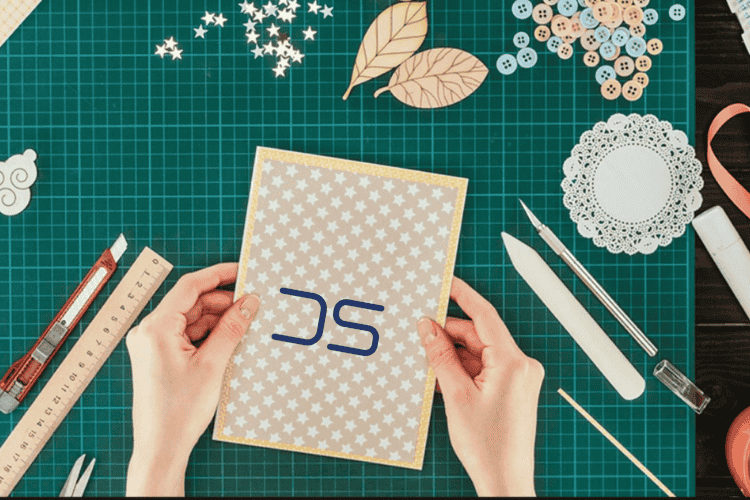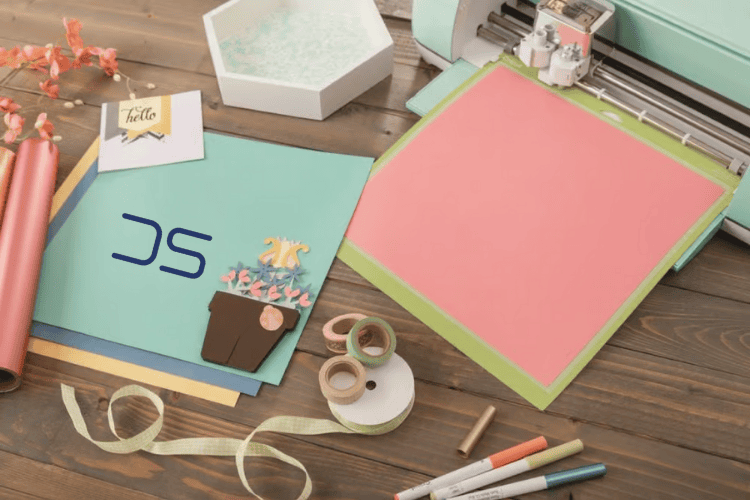The Science of Sublimation: How Heat and Pressure Create Vibrant Prints
The sublimation process is a special way to make vibrant prints on different materials. It changes a solid into a gas without becoming a liquid first. Then, it uses heat to infuse the material, making the prints last long and look great.
To get the best results, you need the right tools and conditions. This makes the prints both durable and colorful. It’s a key method in textile printing, helping to create custom designs on fabrics.
Special inks and materials are used in sublimation because they can handle high temperatures and pressures. This results in prints that are not only vibrant but also last a long time. Knowing how sublimation works lets people make unique and professional-looking designs.
Key Takeaways
- The sublimation process involves the transition of a substance from a solid to a gas state without going through the liquid phase.
- Heat transfer is a critical component of the sublimation process, allowing the ink to penetrate the material.
- The sublimation process requires specific equipment and conditions to achieve the desired results.
- The result is a vibrant print that is both durable and long-lasting.
- The sublimation process is widely used in various industries, including textile printing.
- Understanding the basics of the sublimation process is crucial for mastering the technique and exploring its various applications.
Understanding the Basics of Sublimation Printing
Sublimation printing changes substances from solid to gas without going through liquid. This happens with heat and pressure. These are key parts of the sublimation basics. Knowing how sublimation works means understanding the heat transfer process and the importance of printing materials.
The sublimation basics include a heat press, special ink, and the right materials. The heat press uses heat and pressure for the sublimation process. The ink changes from solid to gas when heated. The materials used must handle the high temperatures and pressures of sublimation.
- A heat press
- Sublimation ink
- Compatible materials, such as ceramic or polyester fabrics
Learning about the sublimation basics and the heat transfer process opens up sublimation printing’s full potential. It lets people make vibrant, quality prints on many printing materials.
The Physical Chemistry of Heat Transfer in Sublimation
The physical chemistry of heat transfer is key in sublimation. Knowing how heat moves is vital for top-notch prints. Sublimation turns solid directly into gas, without liquid phase. Heat energy, through conduction, convection, and radiation, drives this change.
In sublimation, heat transfer’s physical chemistry ties closely to the process. Heat makes solid ink particles turn into gas. This gas then sticks to the material, making prints last long. Even heating is crucial for quality prints.
- Temperature: The right temperature ensures efficient heat transfer.
- Pressure: Pressure affects how heat moves in the process.
- Time: Longer time means more heat energy is transferred.
Understanding heat transfer in sublimation helps make better prints. It’s about controlling heat and knowing the science behind it.
Essential Equipment and Materials for Sublimation Printing
To get top-notch sublimation prints, you need the right tools and materials. A heat press is key, as it applies heat and pressure to transfer ink onto materials. There are different heat presses like clamshell, swing-away, and drawer types, each with its own benefits.
Choosing the right sublimation ink is also vital. It must handle high temperatures and pressures. Sublimation ink mixes dyes and pigments in a liquid carrier.
Compatible Substrate Materials
The quality of your print depends on the substrate materials used. Common ones include ceramics, glass, and fabric. It’s important to pick materials that work well with the ink and heat press. Here’s a table showing some common materials and their compatibility:
| Substrate Material | Compatibility |
|---|---|
| Ceramics | High |
| Glass | Medium |
| Fabric | High |
By picking the right heat press, ink, and materials, you can get vibrant, lasting prints. Always follow the manufacturer’s guidelines for the best results.
The Science of Sublimation: How Heat and Pressure Create Vibrant Prints
Sublimation science combines heat and pressure to make vibrant prints. It’s used for top-quality images on fabrics, ceramics, and metal. Understanding how heat and pressure work together is key to making vibrant prints.
The process turns a solid directly into a gas, skipping the liquid phase. Heat and pressure make the sublimation ink bond with the material. This results in a vibrant print that lasts a long time.
To get the best prints, knowing about heat and pressure is crucial. The right mix of these factors leads to vibrant prints that are both colorful and durable. By learning sublimation science, you can make prints that meet your needs.
Important things to think about in sublimation science include:
- Temperature: The best temperature for sublimation printing changes with the material.
- Pressure: The correct pressure is needed for the ink to bond well with the material.
- Time: How long the sublimation process lasts can impact the print’s quality.
By grasping sublimation science and how heat and pressure interact, you can make vibrant prints that are both high-quality and long-lasting. Whether you’re working with fabrics, ceramics, or metal, knowing sublimation can help you get the best results.
Temperature and Pressure Parameters
In sublimation printing, temperature control is key for top results. The right heat settings depend on the material. Precise temperature control ensures the ink bonds well with the substrate.
Pressure parameters also matter a lot in sublimation. The pressure used can change how the ink bonds with the material. Different pressures lead to different results.
Optimal Heat Settings
The best heat settings for sublimation printing change with the material. Ceramics and glass need higher temperatures than fabrics and plastics.
Pressure Requirements
Pressure needs vary with the material in sublimation printing. For example, ceramics and glass need more pressure than fabrics and plastics.
Timing Considerations
Timing considerations are crucial in sublimation printing. The time the heat and pressure are applied can impact print quality. Different materials need different timing considerations.
Here’s a quick summary of important factors:
- Temperature control: precise temperature control is necessary for optimal results
- Pressure parameters: different pressures can produce different results
- Timing considerations: the duration of the heat and pressure application can affect the quality of the print
Understanding and controlling these factors leads to high-quality sublimation prints. Whether printing on ceramics, glass, fabrics, or plastics, temperature control, pressure parameters, and timing considerations are vital for the best results.
Color Theory and Vibrancy in Sublimation
Knowing color theory is key to getting vibrancy in sublimation printing. Colors work together and with the material in special ways. This affects the final look. In sublimation, color theory works differently because of the unique process.
Sublimation printing can make many colors look very vibrant. But, the material used can change how colors appear. It’s important to know how materials react with sublimation and adjust color theory for the best results.
- Use high-quality sublimation ink made for the material
- Change the color profile for the material’s color and texture
- Adjust the sublimation process settings for better ink absorption
By following these tips and understanding color theory, you can get vibrant and accurate colors in your sublimation printing projects.
Common Applications and Industry Uses
Sublimation printing is used in many industries. It’s great for textile printing and hard surface applications. This technology makes prints vibrant and long-lasting.
Textile Printing
Textile printing is a big hit with sublimation. It’s used for custom t-shirts, hoodies, and more. The perks include:
- Photo-realistic prints
- Durable and long-lasting
- Soft and breathable fabric
Hard Surface Applications
Hard surfaces like ceramics, glass, and metal can be printed too. It’s perfect for making unique mugs, water bottles, and phone cases.
Commercial Uses
Sublimation printing is also great for business. It’s used for signs, interior design, and promotional items. It’s a smart choice for businesses looking to save money and time.
| Application | Description |
|---|---|
| Textile Printing | Custom t-shirts, hoodies, and other fabric items |
| Hard Surface Applications | Printing on ceramics, glass, and metal |
| Commercial Uses | Signage, interior design elements, and promotional products |
Troubleshooting Common Sublimation Issues
When you work with sublimation printing, troubleshooting is key to quality. Issues like wrong temperature, pressure, or ink can happen. Finding and fixing the problem is crucial.
Common problems include uneven heating, wrong pressure, and ink issues. Here’s how to tackle them:
- Make sure the heat press temperature and pressure are right.
- Check if the ink works well with the material you’re using.
- Look for any flaws in the material that could mess up the print.
By following these tips, you can avoid sublimation issues and get great prints. Always check the maker’s guide for specific troubleshooting advice on printing problems.
Conclusion: The Future of Sublimation Technology
Sublimation technology is growing fast, bringing new advancements and innovations. We’ll see better heat press tech, new sublimation inks, and more substrate materials to work with. These changes will make sublimation even more powerful.
The future of sublimation looks bright. We might see heat presses that use less energy and waste. Also, eco-friendly inks could make sublimation better for our planet. This could help more small businesses and artists get into the game.
Keeping up with advancements in sublimation technology is key. It helps both new and experienced users. The future is exciting for those who dive into this innovative printing method.
FAQ
What is Sublimation?
Sublimation is a way to print using heat and pressure. It turns dye-based ink into gas, which then bonds with materials like fabric and metal. This creates lasting, vibrant prints.
What are the Key Components Required for Sublimation Printing?
You need a heat press, sublimation ink, and the right materials for sublimation printing. The heat press applies heat and pressure. This makes the ink bond with the material’s surface.
How Does the Science of Heat Transfer Work in Sublimation?
Heat turns the solid ink into gas in sublimation. This happens without the ink becoming liquid. The heat press’s heat and pressure make the ink bond with the material, creating bright prints.
What Types of Heat Press Technologies are Used in Sublimation Printing?
Sublimation uses different heat press technologies like clamshell and swing-away. Each has its own benefits, like ease of use and even heat distribution.
How Do Temperature and Pressure Parameters Affect Sublimation Printing?
Temperature and pressure are key in sublimation. The right heat makes the ink bond well with the material. The correct pressure helps the ink penetrate the surface. Getting these right is crucial for quality prints.
How Does Color Theory and Vibrancy Impact Sublimation Printing?
Color theory is important in sublimation. It affects how colors look and feel. Knowing how materials and conditions change colors is key for great prints.
What are the Common Applications and Industry Uses of Sublimation Printing?
Sublimation is used in many ways, like printing on clothes and ceramics. It’s also used for signs and design. Its versatility makes it great for many products.
How Can I Troubleshoot Common Sublimation Issues?
To fix common problems, like uneven heating, know how to adjust. Understanding these issues helps ensure your prints are always good. It also saves you from wasting materials.



